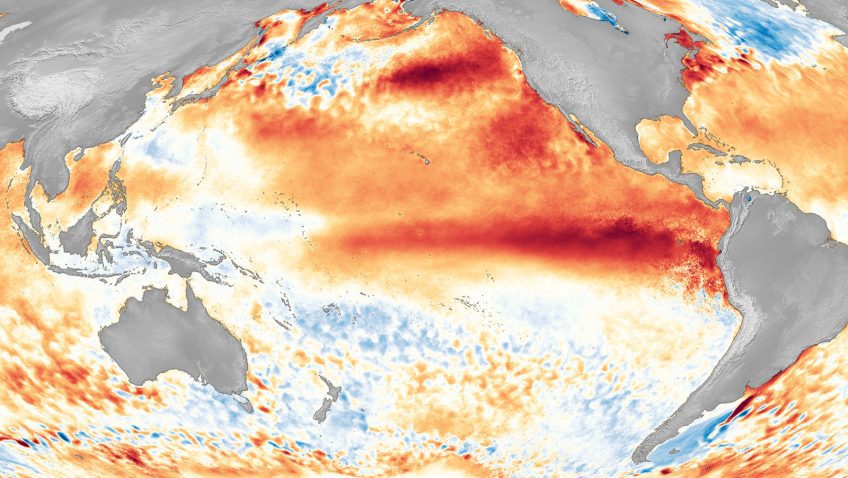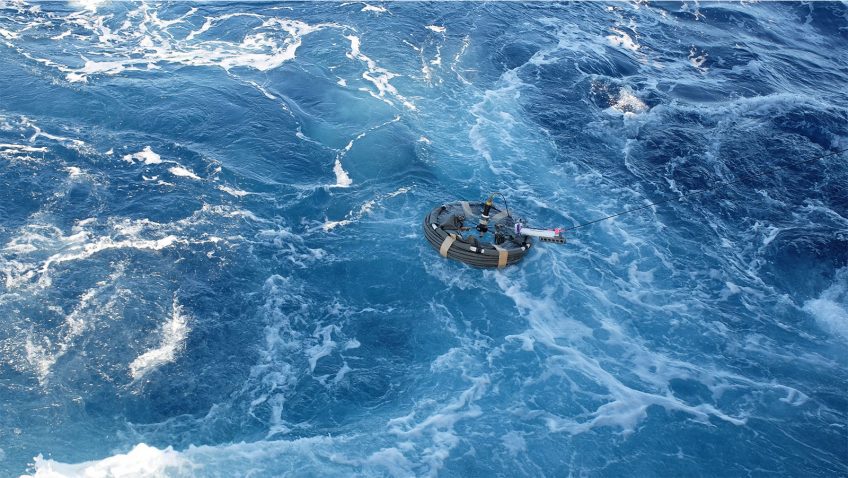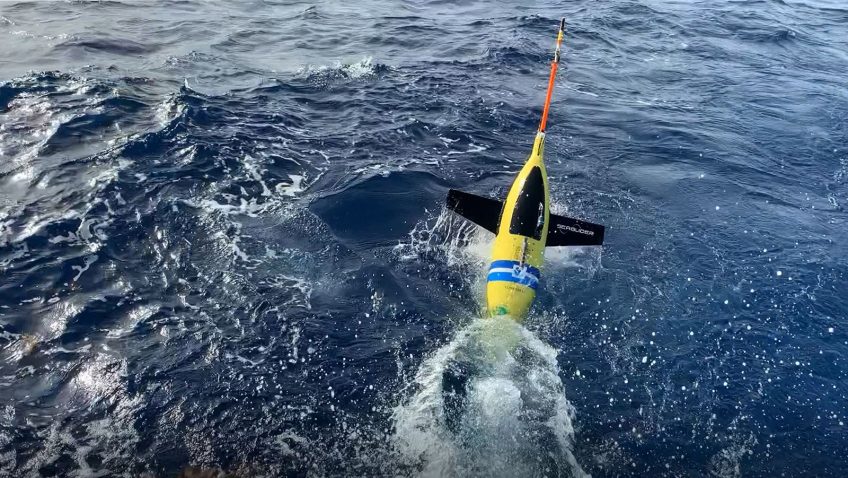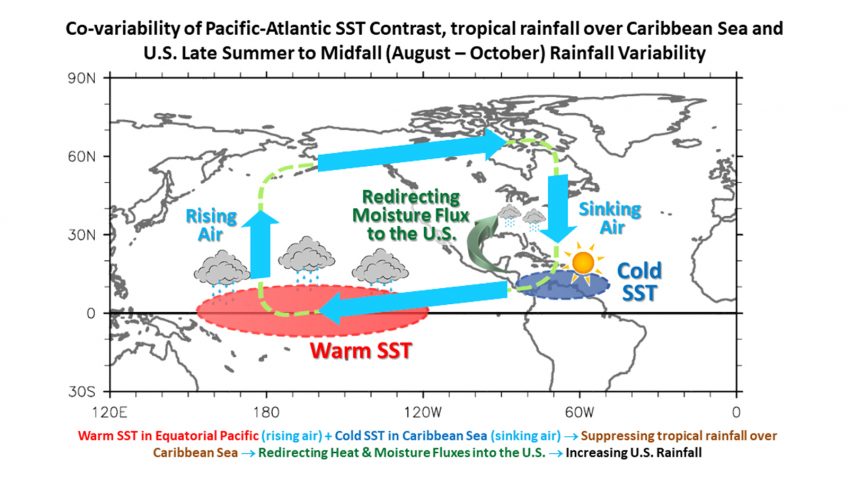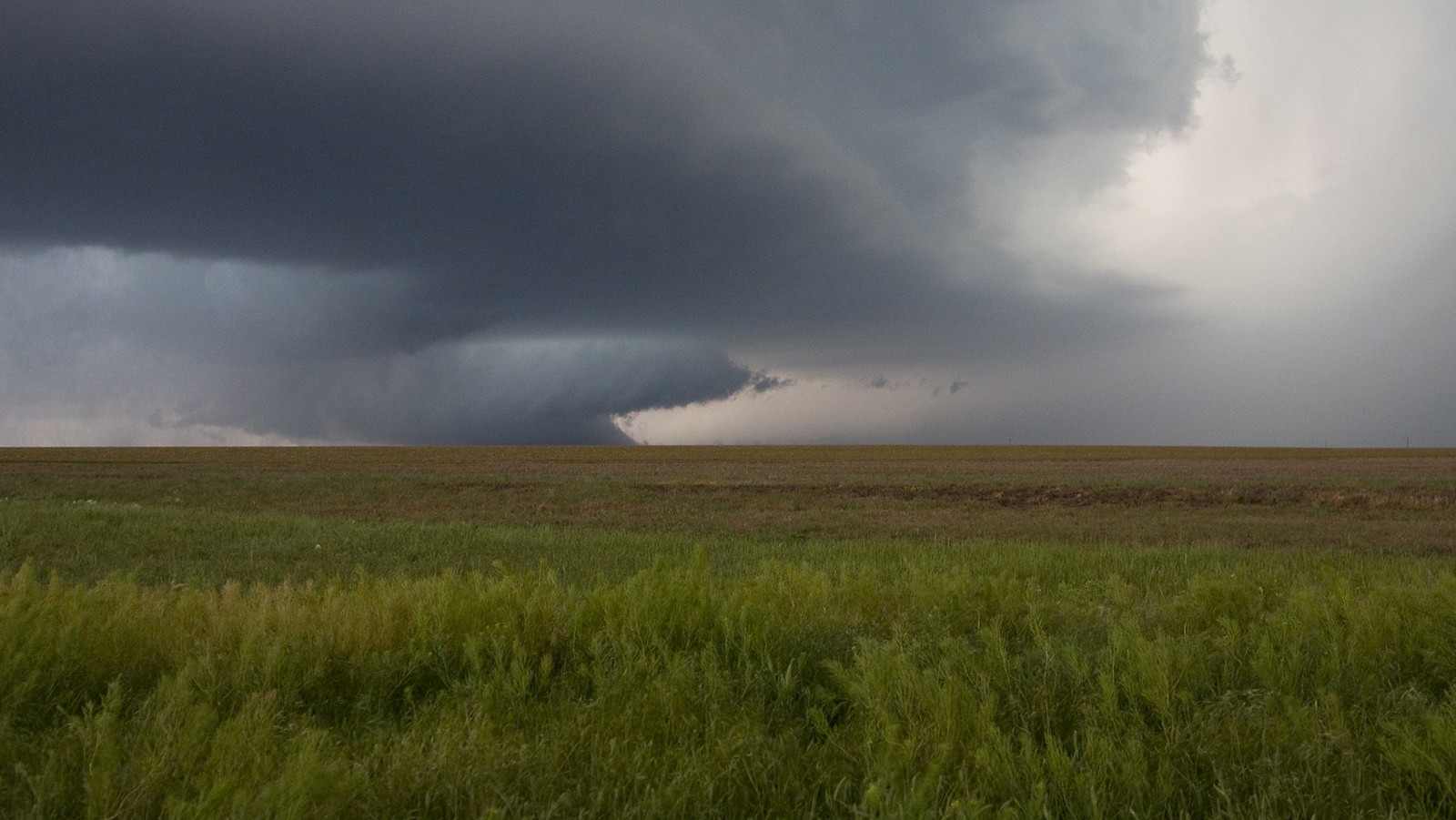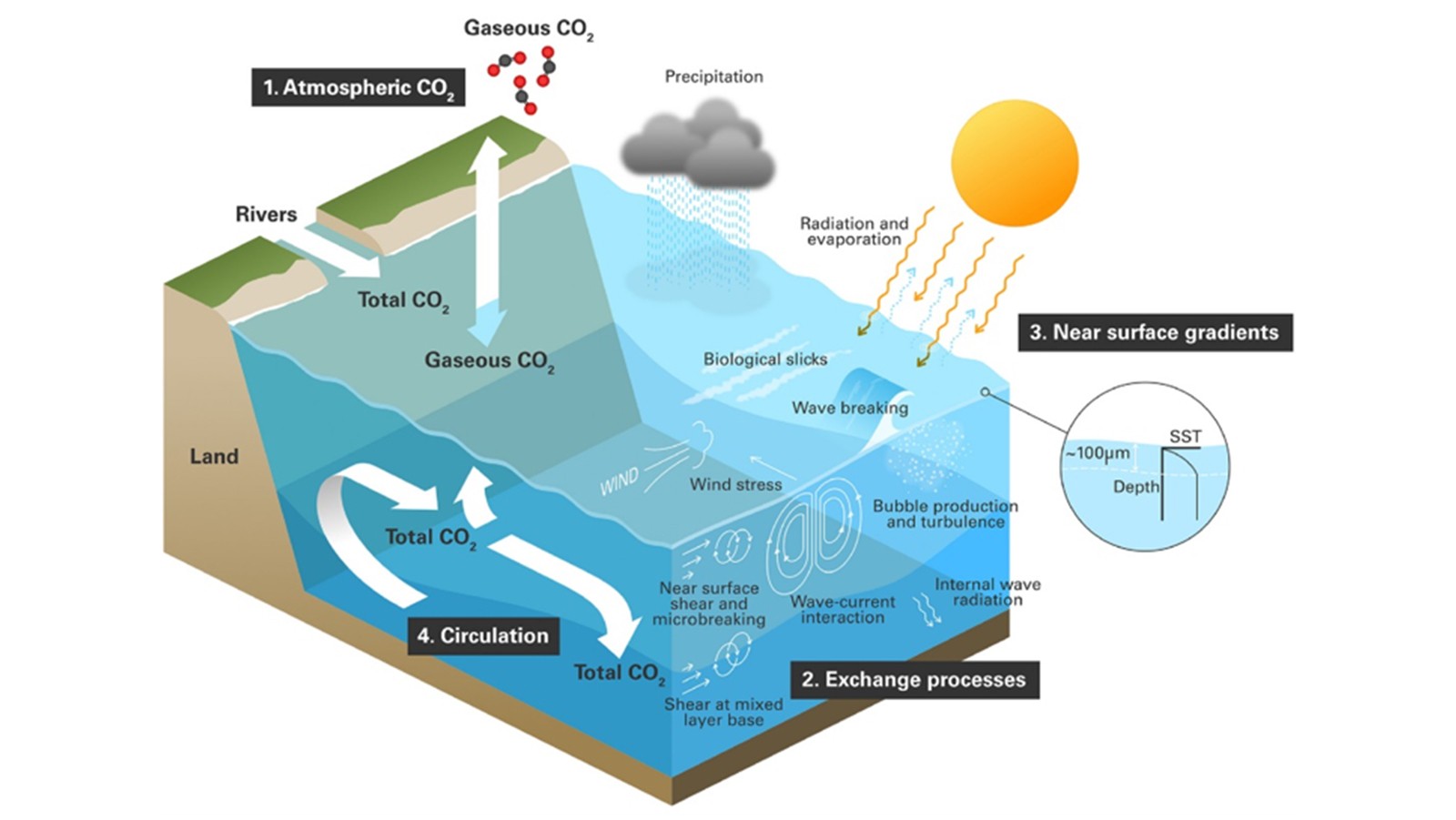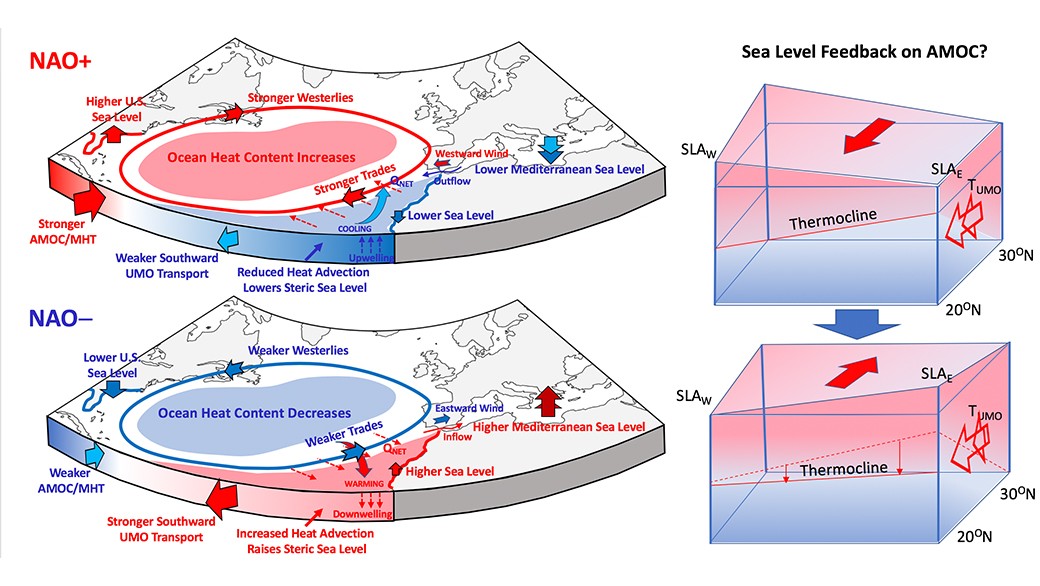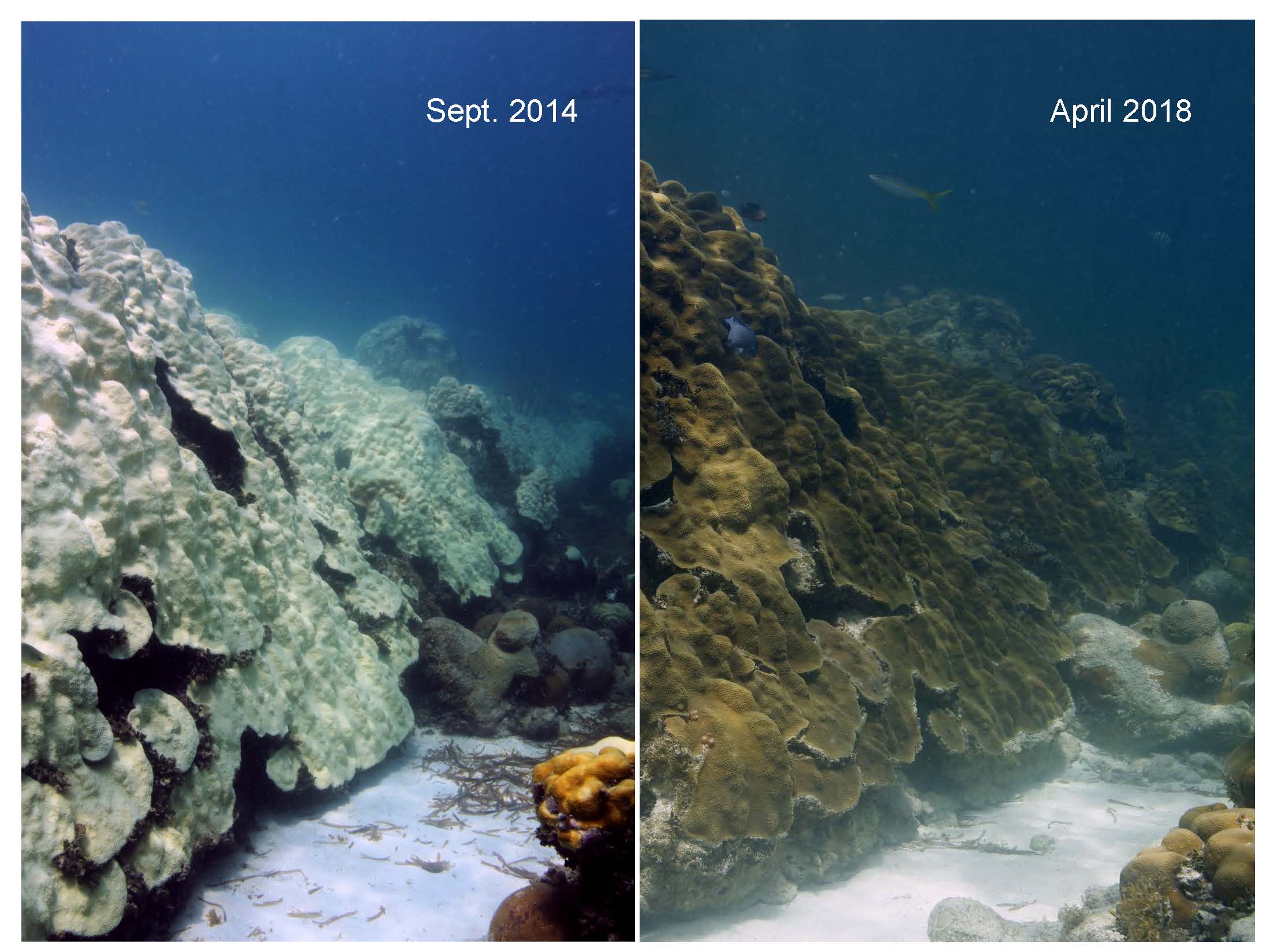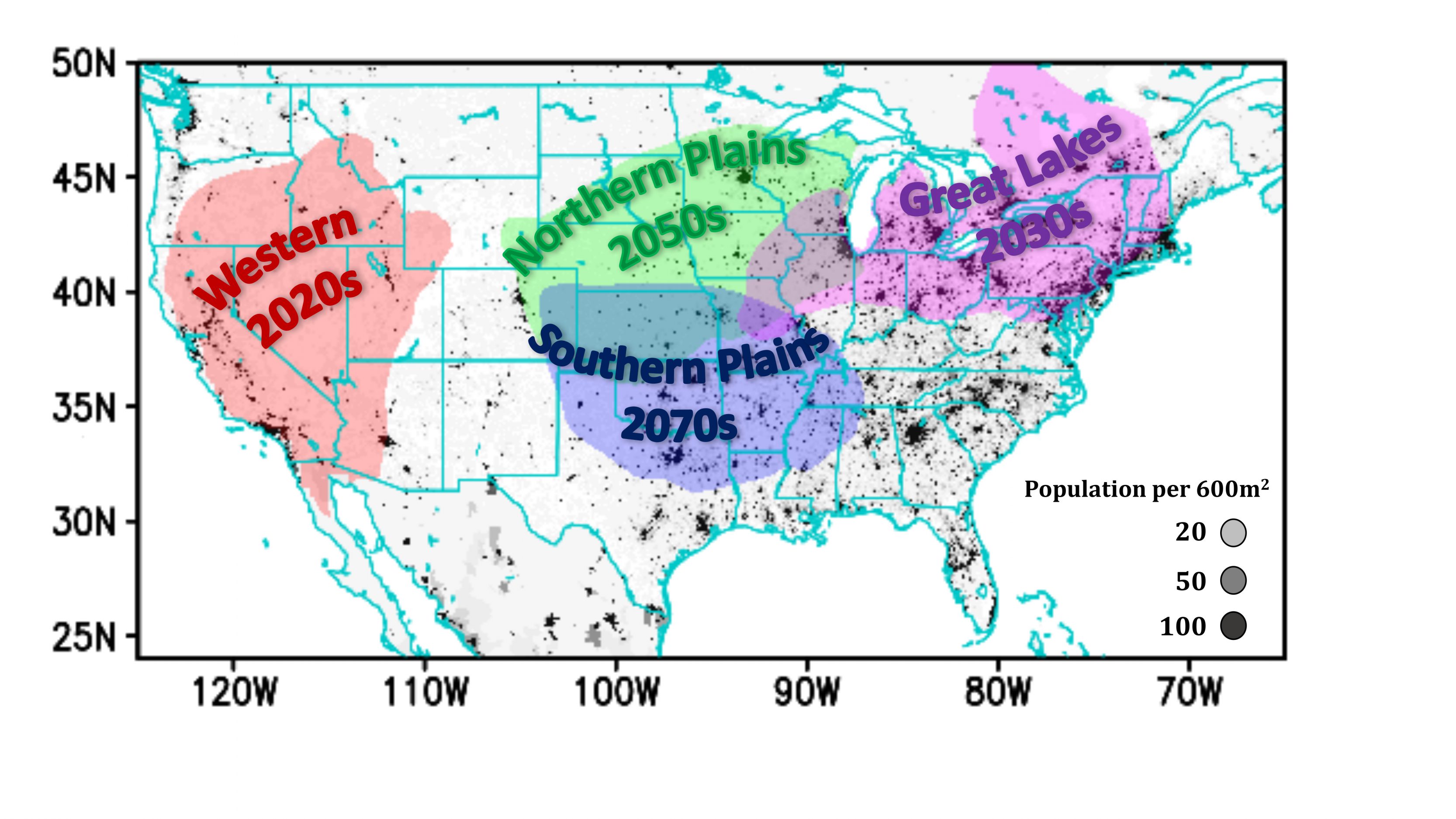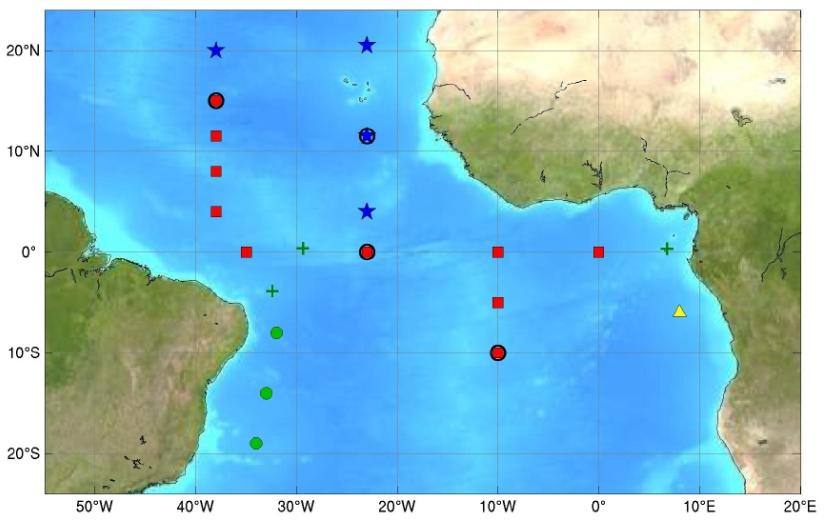The Atlantic Niño: El Niño’s Little Brother
Despite their differences, it is still widely thought that Atlantic Niño is analogous to El Niño in many ways. Specifically, the atmosphere-ocean feedback responsible for the onset of Atlantic Niño is believed to be similar to that of El Niño, a process known as Bjerknes feedback. The near-surface trade winds blow steadily from east to west along the equator. When weaker-than-normal trade winds develop in the western Atlantic basin, downwelling equatorial Kelvin waves propagate to the eastern basin, deepening the thermocline and making it harder for the colder, deeper water to affect the surface.
